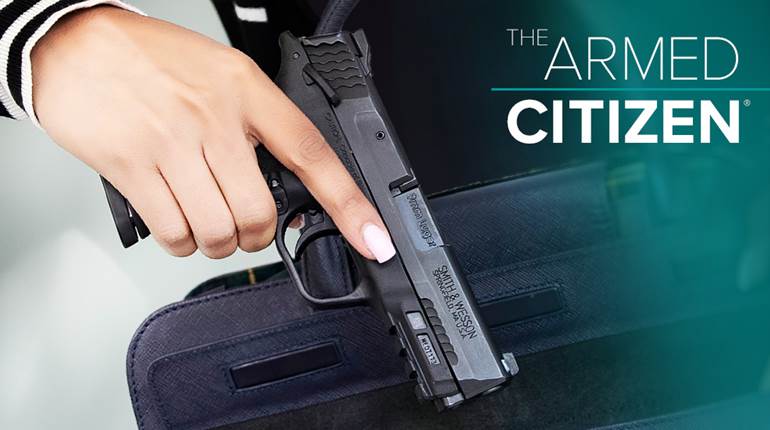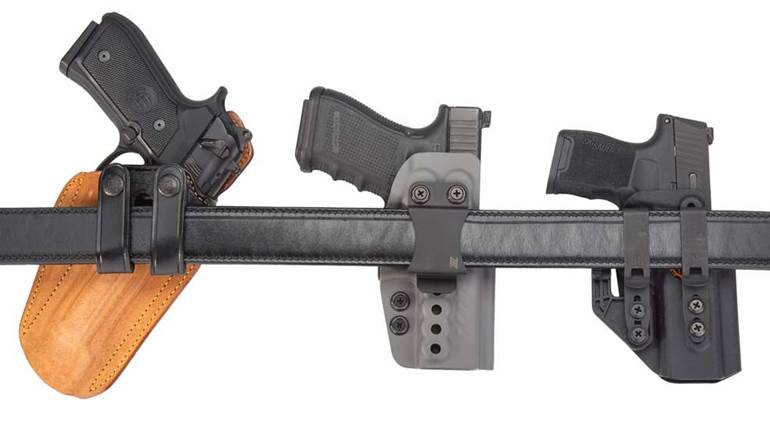
If you’re going to carry a firearm, you need to adopt a habitual way of living. This can include where you go, what you do, how you dress and how you view other people and situations. It starts with awareness and alertness. The world can be a dangerous place, and you may have to face that danger at some point to protect yourself or your loved ones. That's why we carry.
While you need not be paranoid about this, you need to remain in a state of relaxed alert, what we call Condition Yellow at Gunsite Academy, any time you are out and about. The first principle of personal defense (from my mentor, Col. Jeff Cooper) is alertness.
You can’t stop an attack unless you see it coming, so stay alert and position yourself to take advantage of potential cover and concealment. You should watch entrances and know where the exits are, even if it means you have to run through the kitchen and go out the back.
Here are some other things to consider:
Don’t do stupid things with stupid people. If you’re carrying a firearm, avoidance is your best defense and staying away from potentially dangerous people and situations is your best bet. The best gunfight is the one you don’t attend.
Dress for success. Carrying concealed means your firearm has to stay hidden. Dressing to cover it may necessitate some changes in your wardrobe or method of carry. Learn to avoid touching the pistol and adopt a posture that keeps it from “printing”—being visible through your clothing—as you move about your daily tasks. If you're carrying in a belt holster, use a sturdy belt and cinch it up tight to keep the belt from sagging and letting the pistol flop about. You’ll avoid having to hike up your pants, a potential giveaway that you’re carrying.
You’re probably going to buy lots of holsters and multiple guns. When advising folks about guns and gear, they want me to tell them what one gun and holster to buy. The fact is, no matter what you start with, you’re very likely to buy more holsters, gear and guns as you travel along this journey.
Most of us have boxes full of holsters and more than a few guns, so welcome to the party. And while you’re at it, don’t cheap out on cheap gear. You’ll regret it later and will only spend more to get what you should have gotten in the first place. Your life may depend on it.
Carry extra ammunition and consider carrying two guns. While any fight you are likely to get into will probably be handled with the ammunition in the gun, there are always exceptions. Mr. Murphy can rear his ugly head at the least expected times. What if you draw your pistol and the magazine falls out? What if more bad guys show up? The fastest reload is another gun, and if you’re carrying a small pistol, reloading or clearing malfunctions will be difficult at best and may be impossible under the stress of a fight.
Train with your carry pistol and ammunition. You should shoot up your carry ammunition and replace it with fresh ammo from time to time, so turn it into a training exercise. Any time you switch ammunition, you should fire at least a box or two to make sure it functions in your handgun and to ensure you know where the ammo is hitting in relation to your sights. Yes, it’s expensive, but you’re worth it.
Carry all the time, without fail. Once you’ve committed to carrying your pistol, you need to do it full time. There are lots of excuses not to carry, but the worst one is assuming nothing will happen. Look at it this way: if you knew you would get into a fight when you went out, would you leave the house? The purpose of defensive pistols is to meet unexpected life-threatening events. We carry them because we can’t always pack a rifle or have an armed escort of SEALs to look after us.
Whether you’re new to concealed carry or an old hand, these tips will help keep you safe, and that’s the idea, isn’t it? To stay safe and out of trouble? Don’t be one of those folks who say, “I can’t believe this is happening. I wish I had a gun."






































